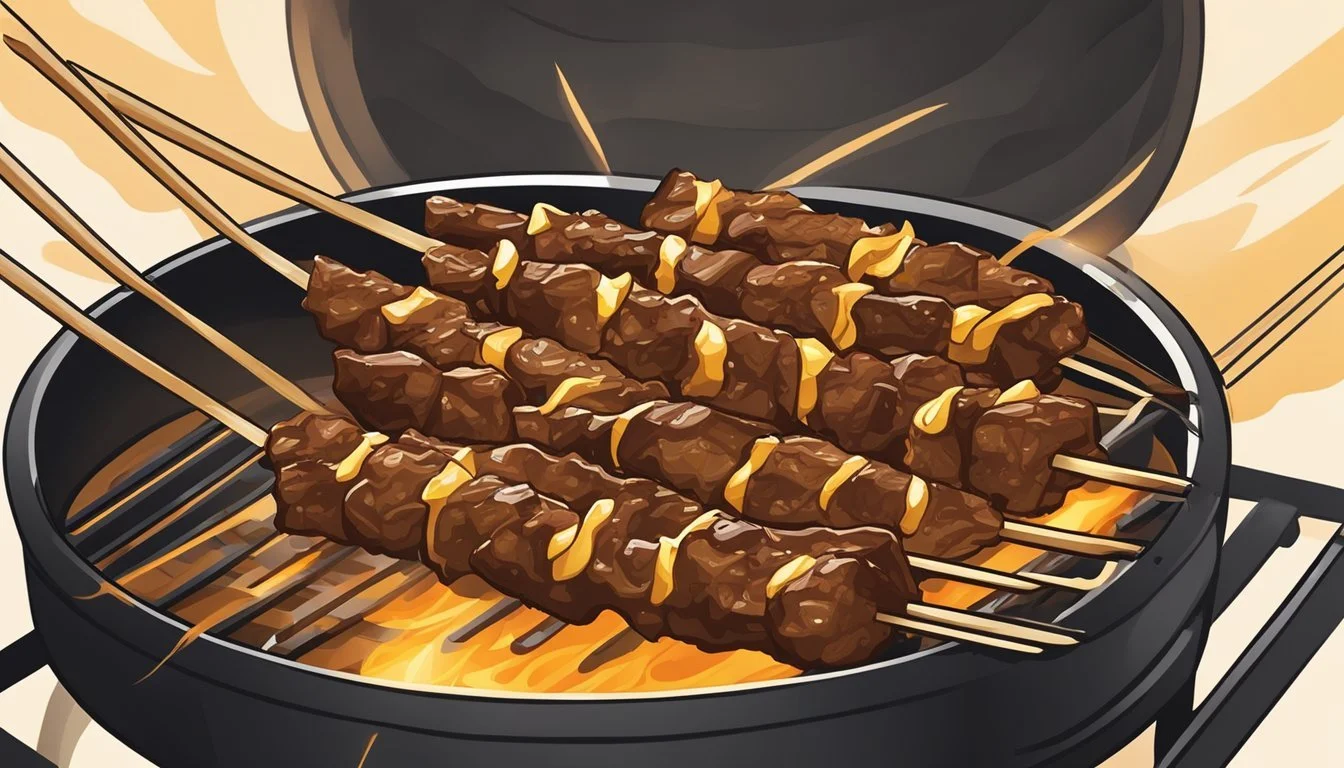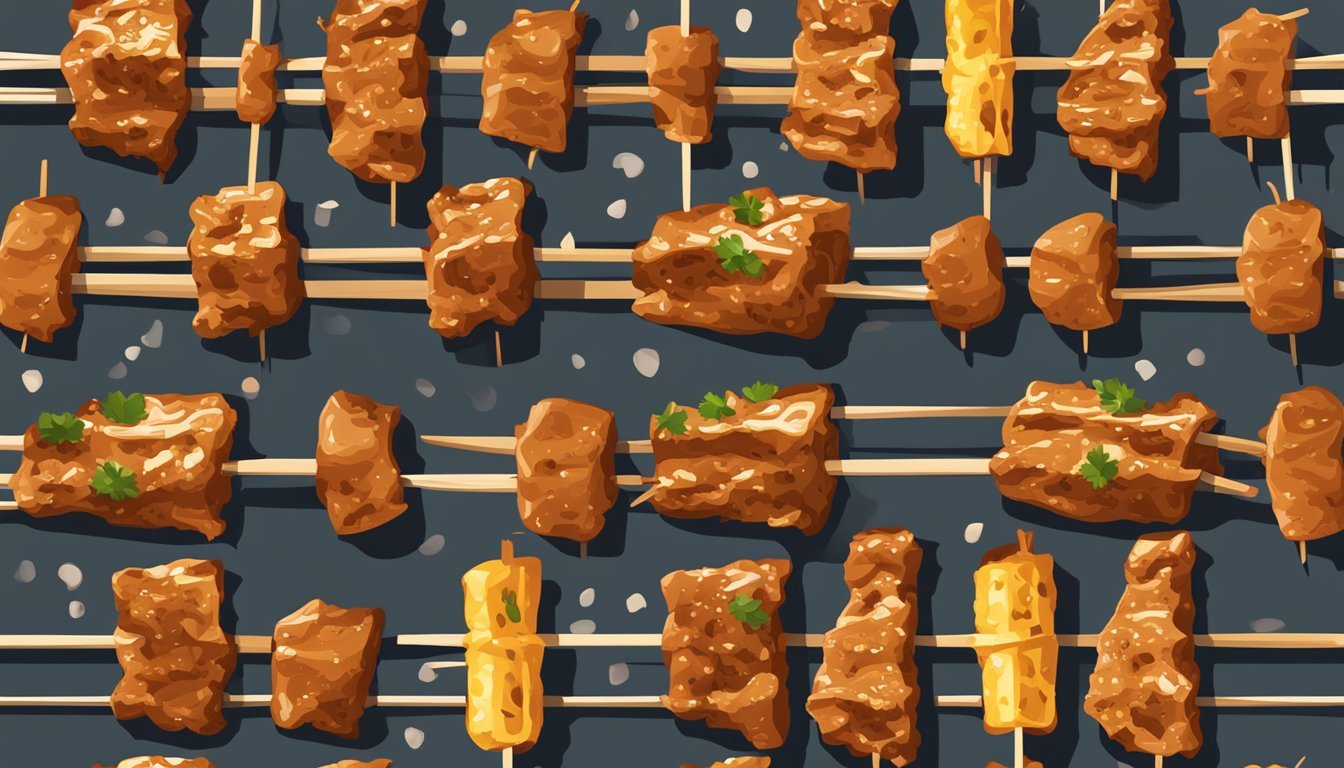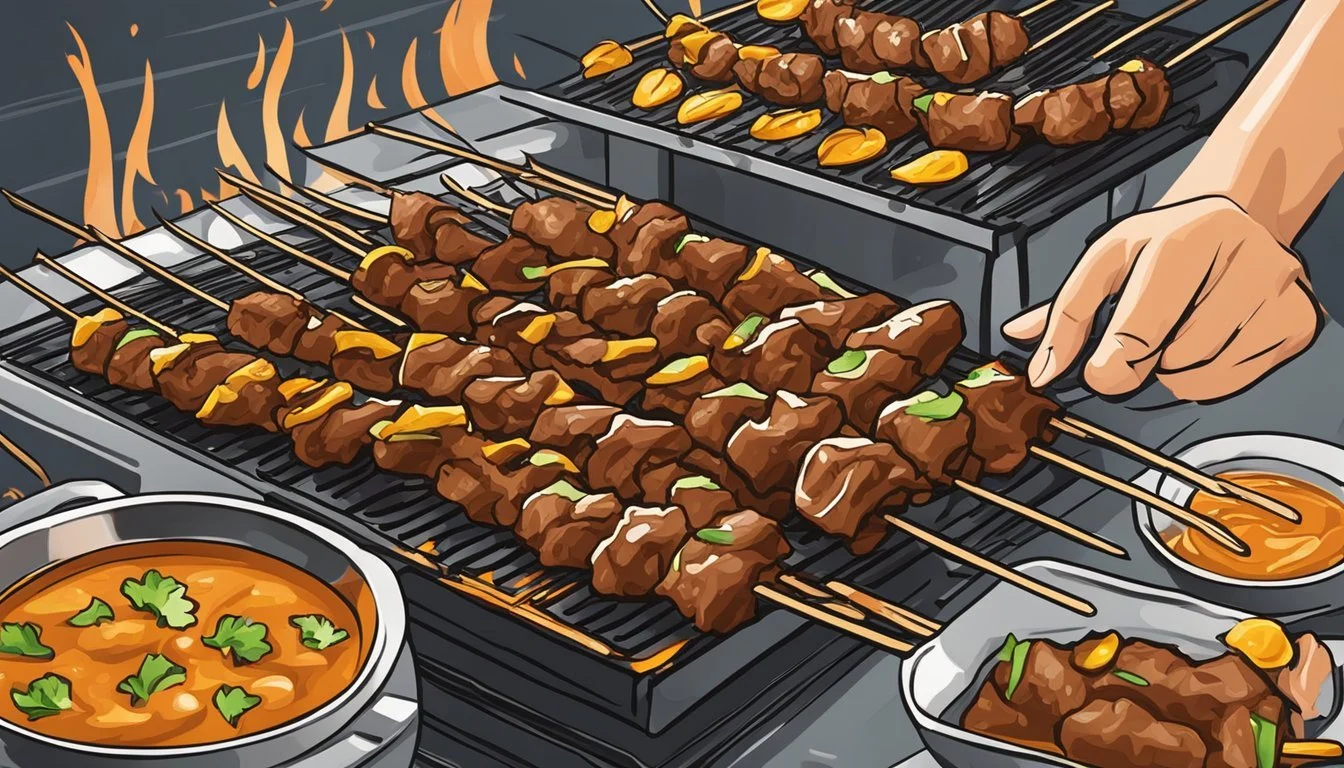Best Way to Reheat Beef Satay
Secrets for Tender Meat and Crispy Skewers
Reheated beef satay can be a delightful dish, but preserving the meat's tenderness and the skewers' crispiness is crucial for maintaining texture and flavor. The key to keeping the beef juicy and flavorful lies in the reheating technique. A gentle warm-up process is typically recommended to prevent the meat from becoming tough or overcooked, which can occur when high heat is applied too quickly.
When reheating beef satay, it is essential to strike a balance between heating it through and maintaining its moisture. Using an oven or a skillet can deliver satisfying results when done correctly. The oven, set to a low temperature, allows for an even and controlled reheating environment, while a skillet on medium heat can swiftly bring back the meat's warmth without losing its juiciness. Maintaining this delicate process ensures that the satay remains tender to the bite.
To protect the crispy texture of the skewers during the reheating process, attention must be given to the exterior of the meat. The method of wrapping the satay in foil or covering it in the oven can help prevent drying out while also crisping up the edges slightly. Ensuring that the heat is not too high preserves the integrity of the skewers, leading to an enjoyable juxtaposition of a crispy exterior with the succulent tenderness of the meat within.
Preparing Beef Satay for Reheating
To ensure that beef satay retains its tenderness and the skewers don't lose their crispiness during reheating, proper preparation is essential. Adhering to a couple of key steps can make a significant difference in the reheating outcome.
Bringing to Room Temperature
Before reheating, one should remove the beef satay from the refrigerator and let it sit until it reaches room temperature. This usually takes about 20 to 30 minutes, depending on the size of the skewers. Bringing the satay to room temperature ensures a more even reheating process, helping to maintain the meat's tenderness.
Preheating the Oven
To prepare for reheating, preheating the oven is a critical step. One should heat the oven to 350°F (175°C). A properly preheated oven promotes an efficient reheating environment, which assists in restoring the satay's crispy texture without overcooking the meat.
Reheating Techniques
When reheating beef satay to preserve its tenderness and to keep the skewers crispy, one must choose the right technique. The method selected can make a significant difference in texture and flavor. Below are effective methods to achieve the best results.
Using an Oven
The oven method ensures even reheating and helps maintain the juiciness of the beef satay. To use this method:
Preheat the oven to 350°F (175°C).
Arrange the satay on a baking sheet lined with aluminum foil or place them on a wire rack.
Heat until the internal temperature reaches about 110°F, to avoid overcooking.
Skillet Method
A cast-iron skillet can be used for a quick and effective reheat, adding a sear that enhances the flavor:
Warm a skillet over medium heat.
Place satay in the hot skillet without overcrowding.
Turn the satay frequently to warm them through while achieving a crispy external crust.
Air Fryer Advantage
An air fryer can reheat leftovers while enhancing their crispy texture:
Set the air fryer to 350°F.
Place skewers in the basket, ensuring not to overcrowd.
Heat for a few minutes, checking to achieve desired crispiness.
Utilizing a Grill
To mimic the original cooking method and add a smoky flavor, use a grill:
Preheat a grill, either gas or charcoal, to a medium temperature.
Grill for a few minutes, turning to sear evenly and heat through.
Microwave Method
The microwave is the quickest way to reheat, but care must be taken to avoid drying out the meat:
Place satay in a microwave-safe container and cover with plastic wrap.
Reheat on medium power in short intervals, checking for even warmth.
Allow the satay to rest briefly to redistribute the juices.
Managing Temperature & Time
The precise management of temperature and time is crucial for reheating Beef Satay. The aim is to retain the tenderness of the meat while ensuring the skewers remain crispy.
Avoiding Overcooking
To prevent overcooking, one should reheat the Beef Satay for a short duration. Overcooking can lead to dry, tough meat which detracts from the quality of the dish. For reheating in an oven, the duration should be concise, typically ranging between 5-10 minutes depending on the original doneness of the meat and the efficiency of the oven.
Using Low Heat
Employing a low to moderate oven temperature—around 275°F to 325°F—is ideal for reheating. This gentle heat warms the satay evenly without burning the skewers or toughening the meat. The following steps can achieve this:
Preheat the oven to the recommended temperature range.
Place satay on a baking sheet.
Use a piece of aluminum foil to tent over the satay. This traps in moisture and heat without direct contact.
Monitoring Internal Temperature
A meat thermometer is an indispensable tool when checking for the desired doneness. Insert it into the thickest part of the satay without touching the skewer. For Beef Satay previously cooked to rare, medium-rare, or medium rare, aim for an internal temperature just below 120°F to 130°F before removing it from the oven. This ensures the meat is heated through but still juicy.
Enhancing Flavor and Texture
When reheating beef satay, maintaining the harmony between a rich flavor profile and the desirable texture of tender meat with a crispy exterior is paramount.
Adding Marinade and Seasonings
Reintroducing flavor to beef satay once reheated can be achieved by basting with a mixture of soy sauce, lime juice, crushed ginger, and minced garlic. The combination of these seasonings not only increases the moisture content, aiding in keeping the meat juicy, but it also revitalizes the satay's intrinsic aromatic qualities.
Marinade Mixture:
Soy Sauce: Enhances umami and saltiness.
Lime Juice: Adds brightness and acidity.
Ginger: Contributes a warm, spicy kick.
Garlic: Brings forth a pungent, savory depth.
Creating a Crispy Crust
To achieve a crispy crust on beef satay without overcooking, preheat the oven to a high temperature—around 400 degrees Fahrenheit—and place the skewers on a wire rack set over a baking sheet. This setup allows for heat circulation around the satay, crisping the exterior while minimizing moisture loss. A quick sear under the broiler for a minute or two can further develop a desirable crust.
Oven Setup:
Temperature: 400°F
Position: Wire rack over baking sheet
Broil: 1-2 minutes for extra crispiness
Retaining Juiciness
To keep the reheated beef satay juicy, cover the skewers with foil for the majority of the reheating process. This creates a steamy environment that prevents the juices from evaporating. For an enhanced effect, a water bath or a brush of au jus can be incorporated halfway through the reheating time to reintroduce moisture and ensure tenderness.
Techniques:
Foil: Traps steam and retains moisture.
Water Bath/Au Jus: Adds moisture during the process.
Post-Reheating Tips
Once the beef satay has been reheated, there are a few additional steps to ensure the meat remains tender and the skewers retain their crispness. These tips will help preserve the quality and flavor, making the dish enjoyable down to the last bite.
Resting and Slicing
After reheating, it’s crucial to let the beef satay rest for a few minutes. This allows the juices to redistribute, preventing the meat from becoming chewy or rubbery. If the beef satay is made from cuts like flank steak or roast beef, thin, precise slicing against the grain ensures maximum tenderness.
Serve With Dipping Sauce
Beef satay pairs excellently with a variety of dipping sauces. Serving it with a traditional peanut sauce can enhance the flavor profile. The sauce should be room temperature or slightly warmed to complement the satay without causing sogginess. A fresh garnish like cilantro can be added as a final touch.
Storage and Safety
If there are leftovers, they should be stored promptly, as per USDA guidelines, to prevent foodborne illnesses. Place the beef satay in an airtight container and refrigerate it. Reheated beef satay should be consumed within two days, and it can also be enjoyed cold in dishes like tacos or as a protein-packed snack.
Special Considerations
After enjoying a flavorful meal, reheating leftovers while maintaining the meat's tenderness and preserving the crispiness of the skewers is key to recreating the experience. Below are specific methods and tips for reheating beef satay effectively.
Sous Vide Reheating
The sous vide method involves heating leftovers slowly in a water bath, which ensures the meat remains succulent and flavors locked in. For sous vide reheating, vacuums seal the beef satay, then submerge it in a water bath at 140°F (60°C) using a sous vide machine. This method is ideal for premium cuts such as filet mignon, rib eye, and tenderloin.
Handling Different Beef Cuts
Different cuts of beef reheat differently. Tender cuts like filet mignon, tenderloin, and rib eye are best reheated using methods that avoid high heat. For tougher cuts such as skirt steak, new york strip, and sirloin steak, a quick sear on a hot skillet can rejuvenate the exterior texture while keeping it tender inside.
Adapting for Chicken Satay
Chicken satay needs careful reheating to prevent drying out. Heating chicken in an oven preheated to 350°F (177°C) — covered with foil to retain moisture — is effective. The internal temperature should reach 165°F (74°C) to ensure it's heated thoroughly while staying juicy.
Considerations for Street Food
Reheating street food, like marinated beef skewers, calls for a balance between maintaining the original flavors and achieving food safety. Grilled or BBQ flavored satay should be reheated gently to prevent overcooking. Covering skewers in foil can help retain texture and prevent drying.




